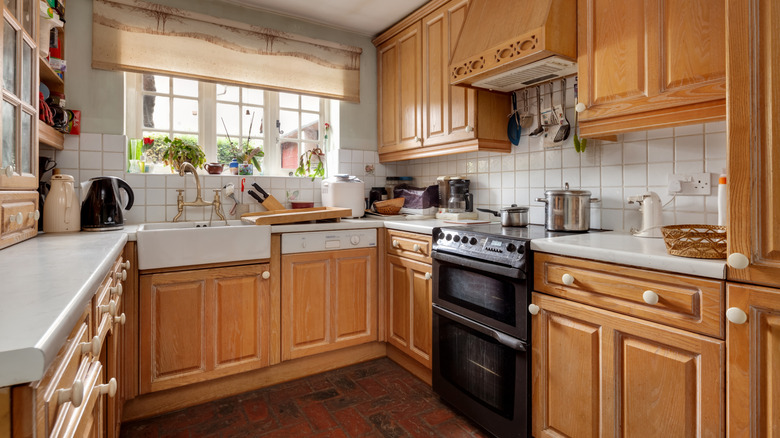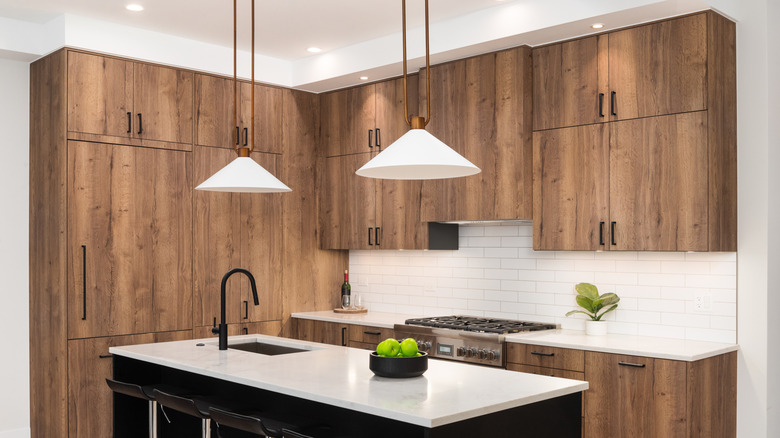What To Consider Before Staining Wood Cabinets To Avoid Any Regrets
Golden oak stains and bulky, arched cabinet doors had their moment in the 1990s, but those orange-hued kitchen cabinets beg for a makeover today. Staining your wood cabinets to eliminate outdated wood tones refreshes the kitchen, especially if you go with a light, natural tone or a darker, modern color. Stained cabinets also hide more blemishes than painted cabinets because damage and dirt blend in with the wood grain. However, staining wood cabinets requires time-intensive prep to get smooth, professional results. You'll get the best results if you sand the cabinets down to the wood rather than applying stain over existing finishes. Sanding the wood lets the stain soak into the pores for a consistent finish.
The workload is larger if you choose a natural, lighter color. You need to sand the wood completely to remove all traces of the previous stain. If you don't, the darker patches from the old stain will show. Going from a lighter to a darker color still requires sanding, but your new darker stain should cover up the previous lighter stain if you leave some behind.
How well the stain goes on also depends on the wood type. Oak and walnut cabinets soak up stain consistently for even results. Other wood types, including pine, birch, and cherry, have varying densities throughout the wood. You could get a blotchy appearance since the stains soak in more in some areas than others. One way to prevent this is by using a wood conditioner before applying the stain.
Is staining wood cabinets the right nove?
Deciding whether you should paint or stain your cabinets, or even replace them completely, comes down to how much work you want to do and what shape your cabinets are in now. Start by determining if you like the style of your cabinets. You can change the color with stain, but you're still stuck with the same door style and shape. Changing the color could downplay the outdated door design, but the combination of a bold stain color and an older door design could make the cabinets stand out even more. If you hate the door design, replacing the fronts could be a better option.
It's also important to consider the other finishes in the kitchen as you choose your new stain. A cabinet color could be perfectly modern and complement the wood tone and grain well but still look out of place against other finishes. If you have other wood tones in the room, such as a wooden floor, consider the undertones when choosing colors. Wood can take on a warm, cool, or neutral undertone. Choosing colors with similar undertones helps you perfectly mix wood tones.
When it comes to other surfaces, such as countertops, you can choose a high contrast, such as light-toned wood with dark countertops, or complementary tones with a subtle difference. Stain samples let you test out the color combinations and see how the stain looks in different lighting to help you find a color you love.

